Abstract
The daily probability (P) of transmission of Trypanosoma cruzi to a noninfected human host by an infected Triatoma infestans bug was estimated using field data from a 2-year longitudinal study carried out in a rural settlement of 20 households in Amamá, Santiago del Estero, Argentina. The following information was used for this purpose: the bug density and the proportion of infected bugs; the bug biting rate and the distribution of bites between humans and animals; the age-specific seropositivity to T. cruzi of the human population; and the actual number of new cases of human infection. The 2-year accumulated number of infective contacts per house estimated using a binomial model shows a statistically significant logistic correlation with the observed proportion of new cases per house. An average house where new cases of human infection were registered in the 2-year period had a P value of 0.0012, while an average general house (i.e., with and without new cases) had a P value of 0.0009. The observed range of P is discussed in terms of the chain of factors that affects the individual human risk of acquiring the infection and the possible entomological sampling errors.
Full text
PDF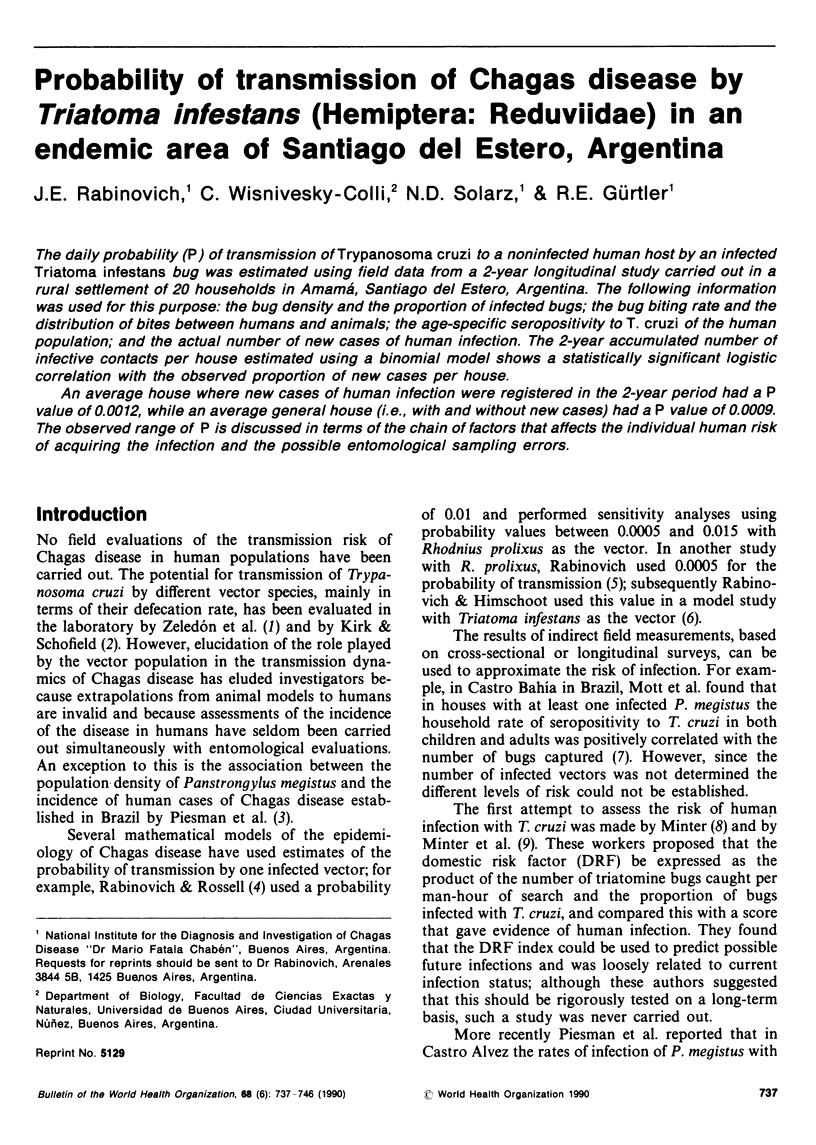
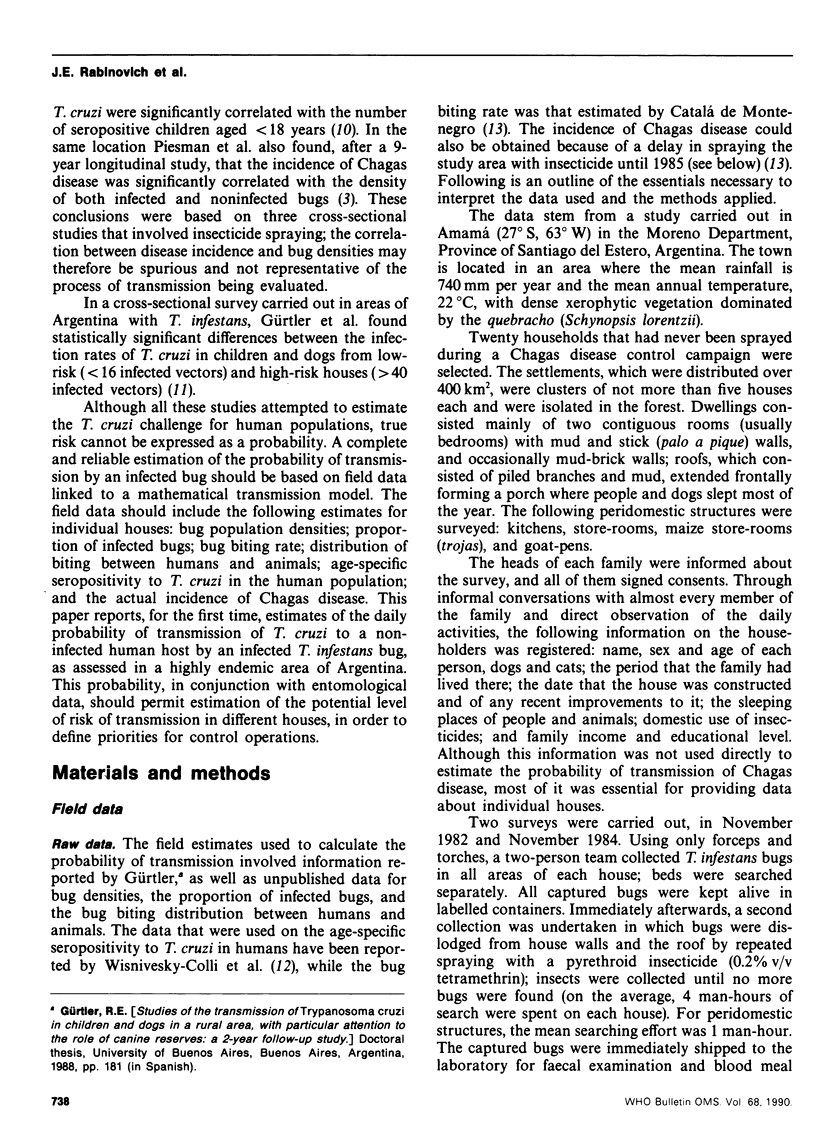
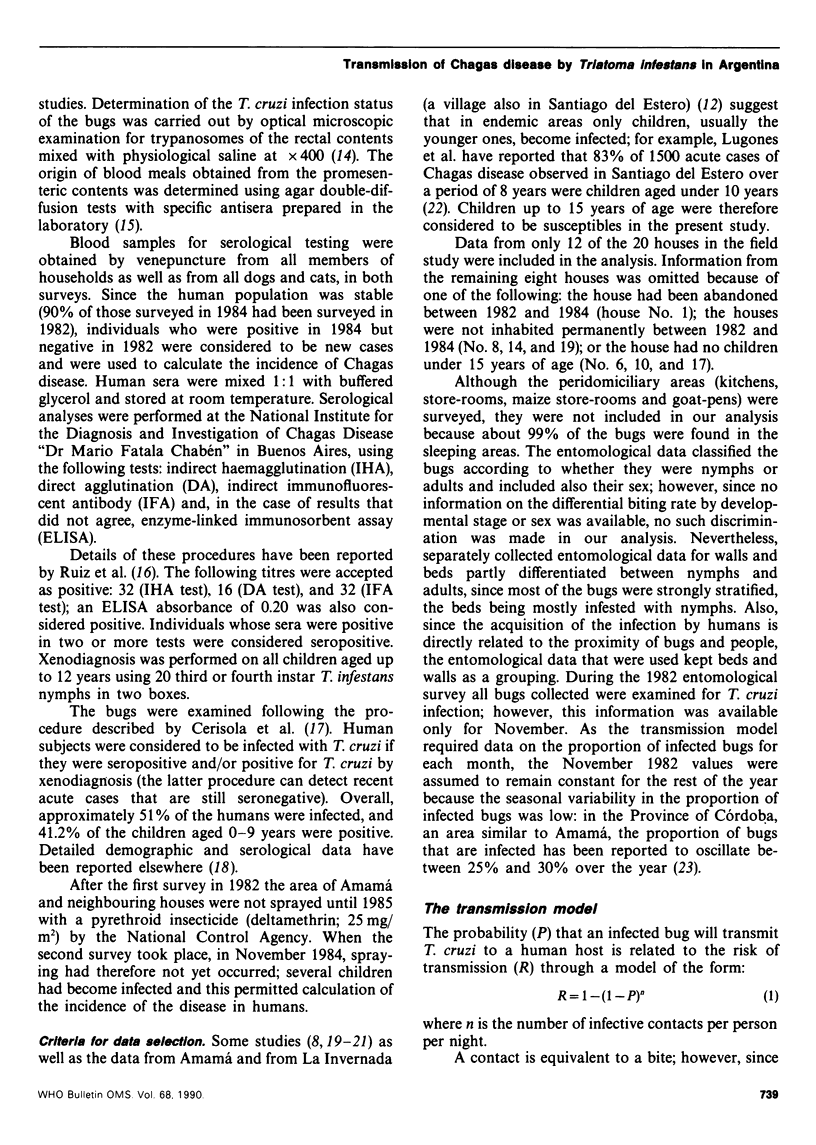
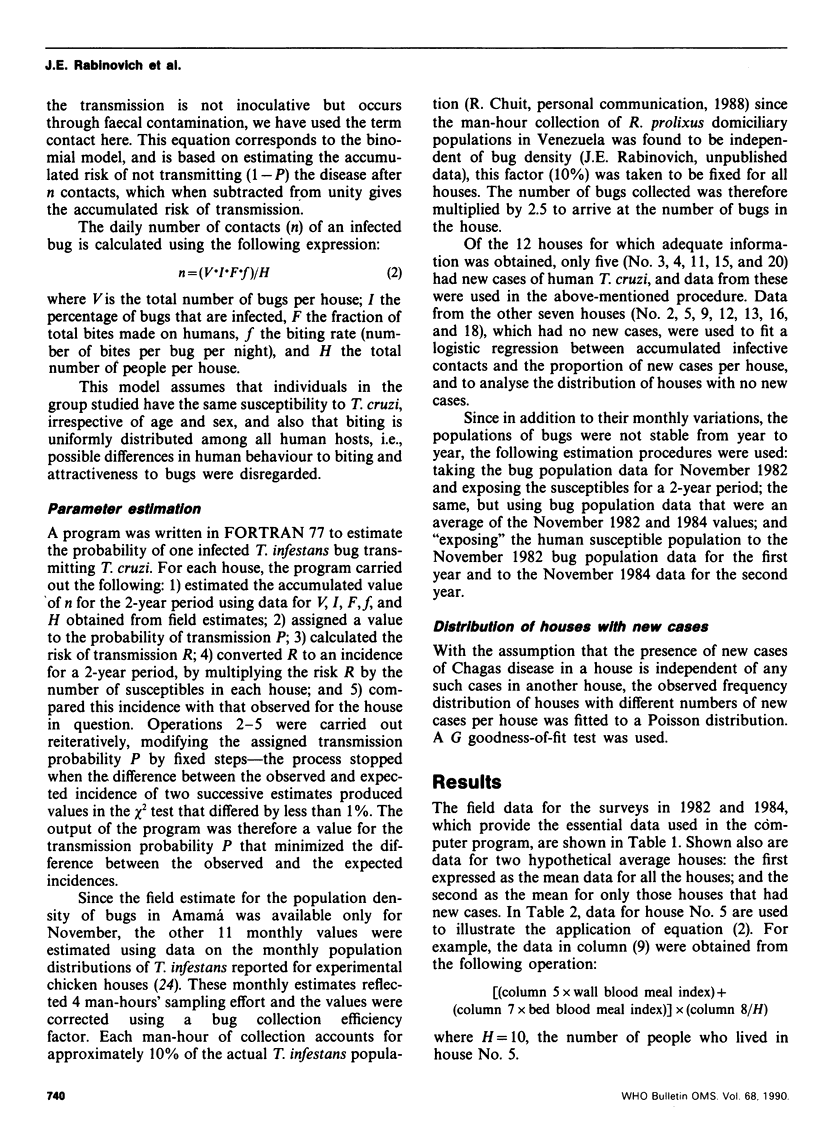

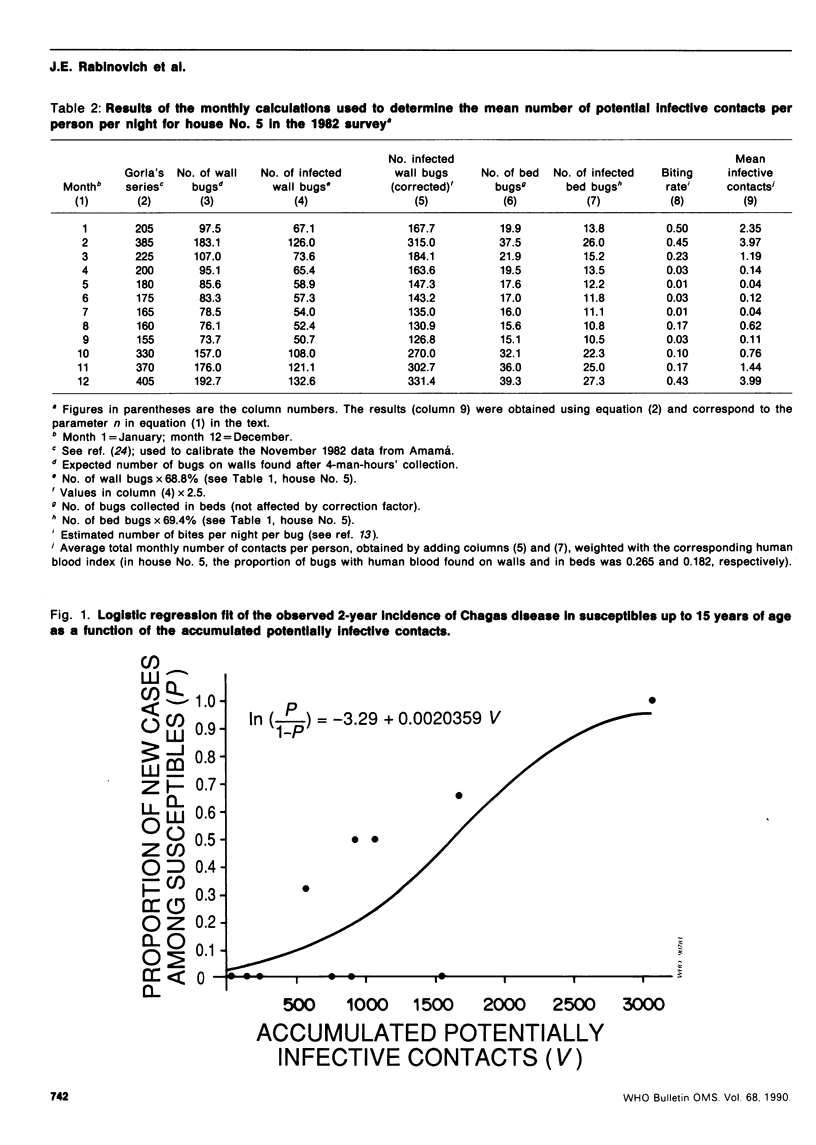
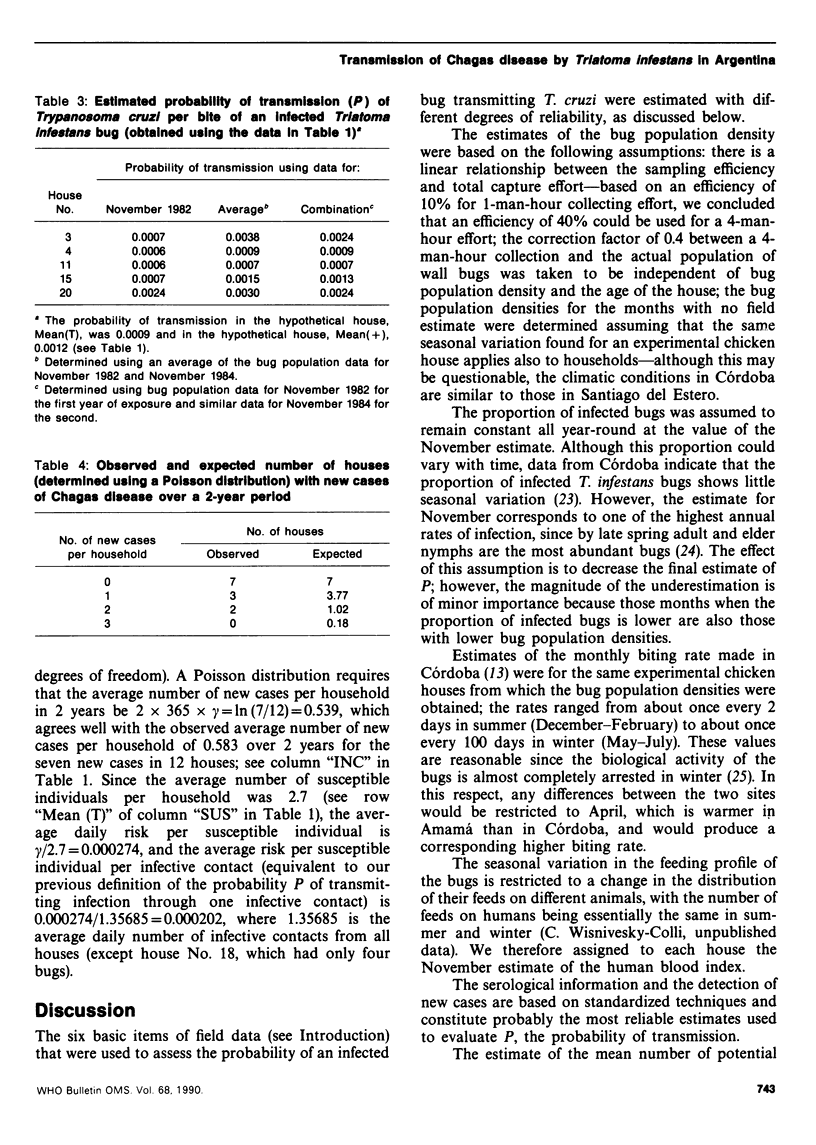
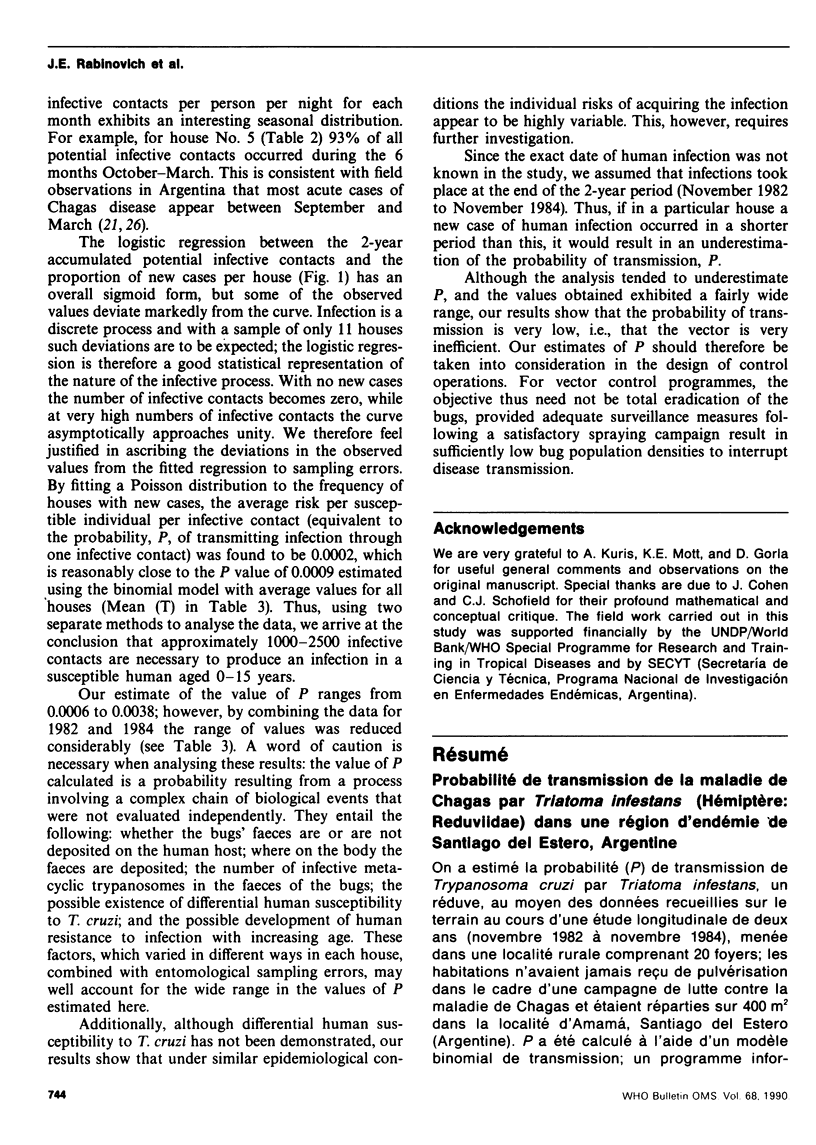
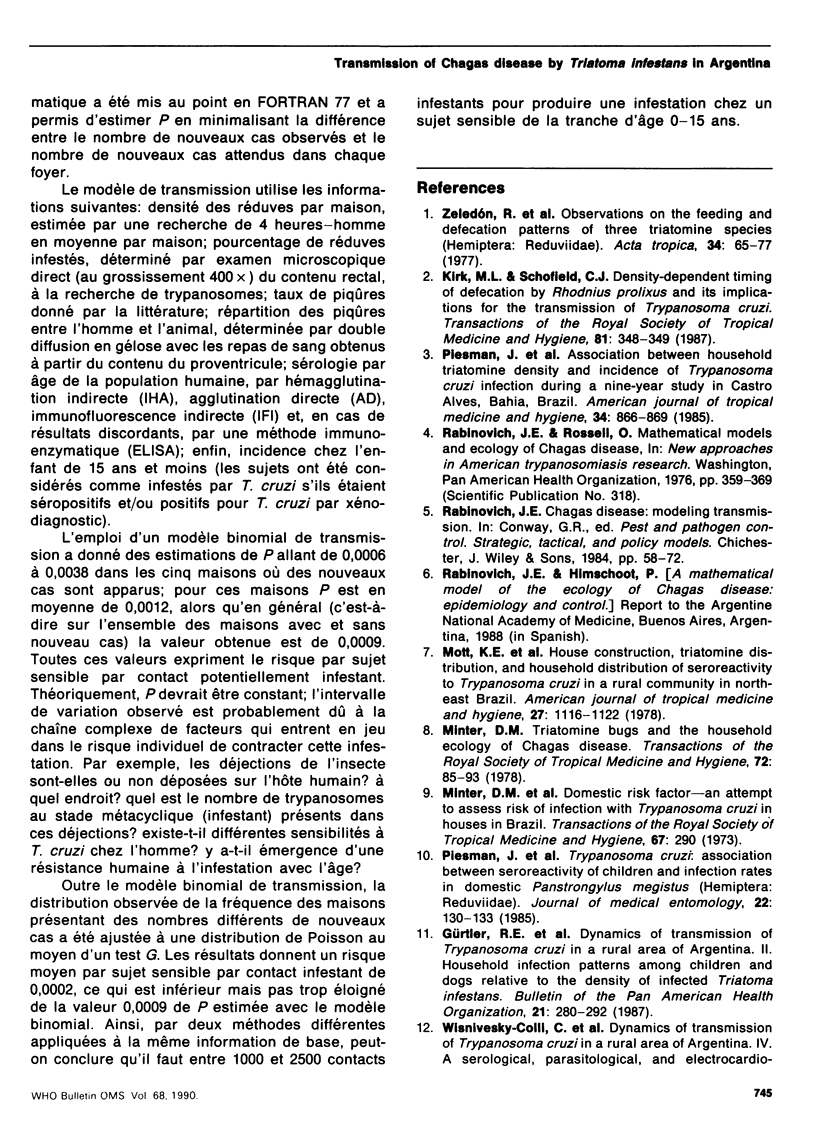
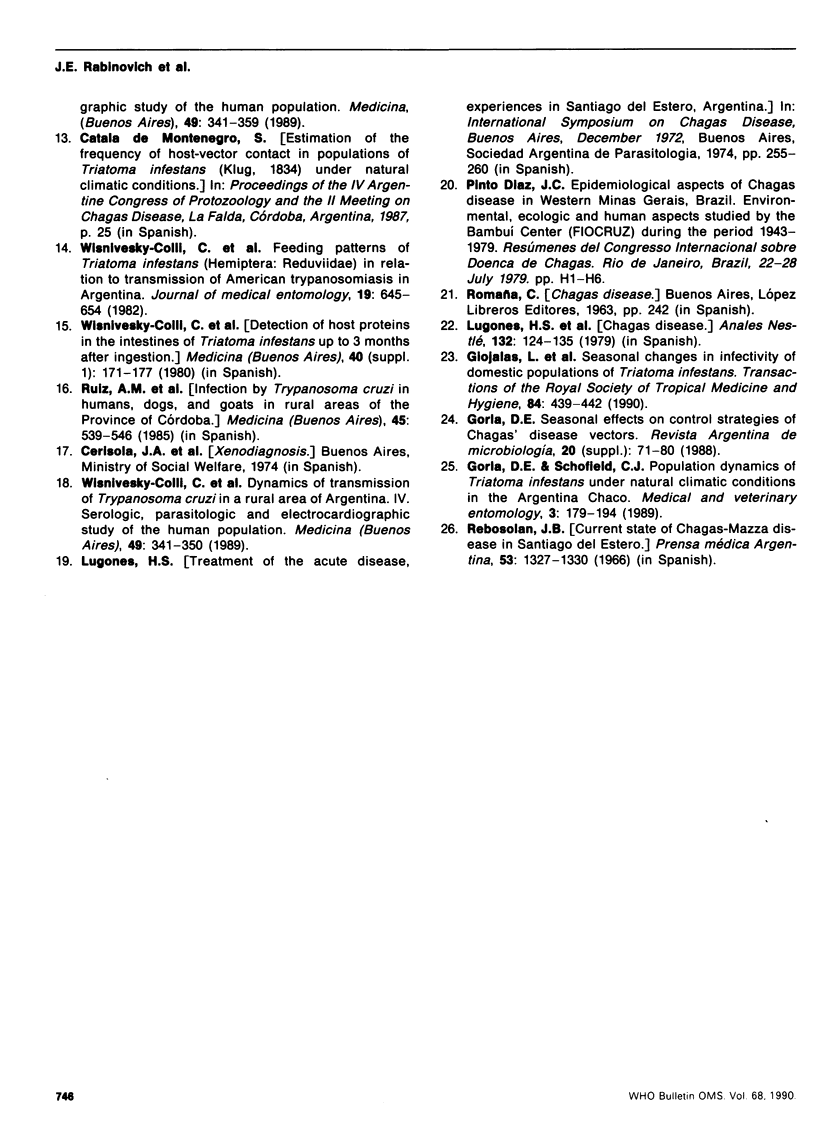
Selected References
These references are in PubMed. This may not be the complete list of references from this article.
- Gorla D. E., Schofield C. J. Population dynamics of Triatoma infestans under natural climatic conditions in the Argentine Chaco. Med Vet Entomol. 1989 Apr;3(2):179–194. doi: 10.1111/j.1365-2915.1989.tb00497.x. [DOI] [PubMed] [Google Scholar]
- Gorla D. E. Seasonal effects on control strategies of Chagas' disease vectors. Rev Argent Microbiol. 1988;20(1 Suppl):71–80. [PubMed] [Google Scholar]
- Gürtler R. E., Wisnivesky-Colli C., Solarz N. D., Lauricella M., Bujas M. A. Dynamics of transmission of Trypanosoma cruzi in a rural area of Argentina: II. Household infection patterns among children and dogs relative to the density of infected Triatoma infestans. Bull Pan Am Health Organ. 1987;21(3):280–292. [PubMed] [Google Scholar]
- Kirk M. L., Schofield C. J. Density-dependent timing of defaecation by Rhodnius prolixus, and its implications for the transmission of Trypanosoma cruzi. Trans R Soc Trop Med Hyg. 1987;81(2):348–349. doi: 10.1016/0035-9203(87)90262-8. [DOI] [PubMed] [Google Scholar]
- Minter D. M., Minter-Goedbloed E., Marsden P. D., Miles M. A., Macedo V. Domestic risk factor--an attempt to assess risk of infection with Trypanosoma cruzi in houses in Brazil. Trans R Soc Trop Med Hyg. 1973;67(2):290–290. doi: 10.1016/0035-9203(73)90211-3. [DOI] [PubMed] [Google Scholar]
- Mott K. E., Muniz T. M., Lehman J. S., Jr, Hoff R., Morrow R. H., Jr, de Oliveira T. S., Sherlock I., Draper C. C. House construction, triatomine distribution, and household distribution of seroreactivity to Trypanosoma cruzi in a rural community in northeast Brazil. Am J Trop Med Hyg. 1978 Nov;27(6):1116–1122. doi: 10.4269/ajtmh.1978.27.1116. [DOI] [PubMed] [Google Scholar]
- Piesman J., Mota E., Sherlock I. A., Todd C. W. Trypanosoma cruzi: association between seroreactivity of children and infection rates in domestic Panstrongylus megistus (Hemiptera: Reduviidae). J Med Entomol. 1985 Mar 22;22(2):130–133. doi: 10.1093/jmedent/22.2.130. [DOI] [PubMed] [Google Scholar]
- Rebosolán J. B. Estado actual de la enfermedad de Chagas-Mazza en Santiago del Estero. Prensa Med Argent. 1966 Jun 17;53(24):1327–1330. [PubMed] [Google Scholar]
- Ruiz A. M., Wisnivesky-Colli C., Gürtler R., Lazzari J., Bujas M. A., Segura E. L. Infección por Trypanosoma cruzi en humanos, perros y cabras en áreas rurales de la provincia de Córdoba. Medicina (B Aires) 1985;45(5):539–546. [PubMed] [Google Scholar]


